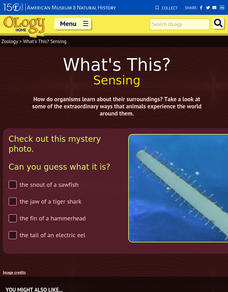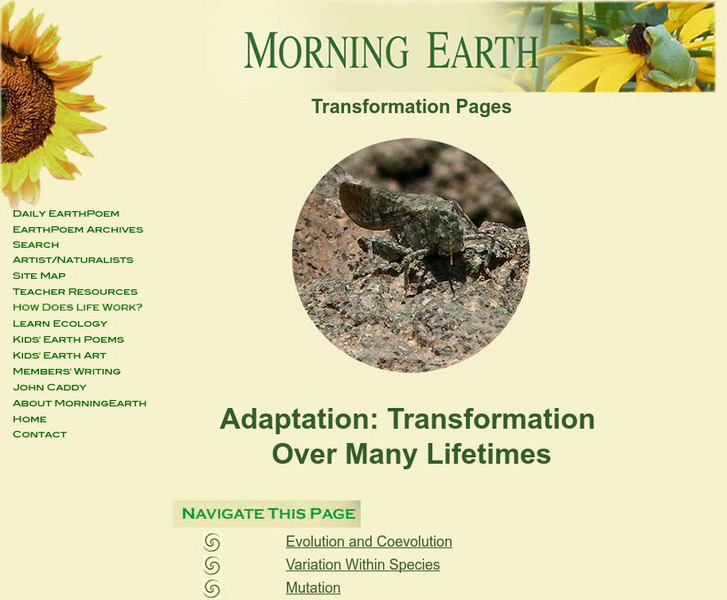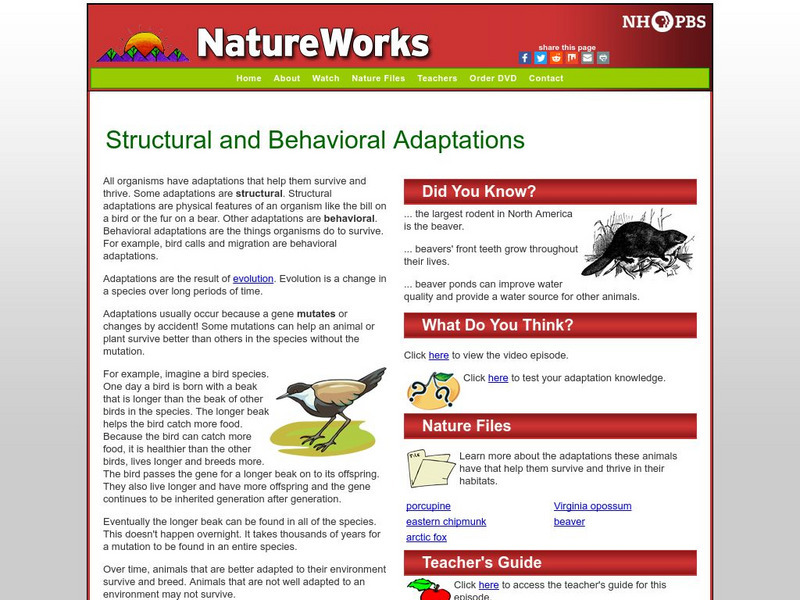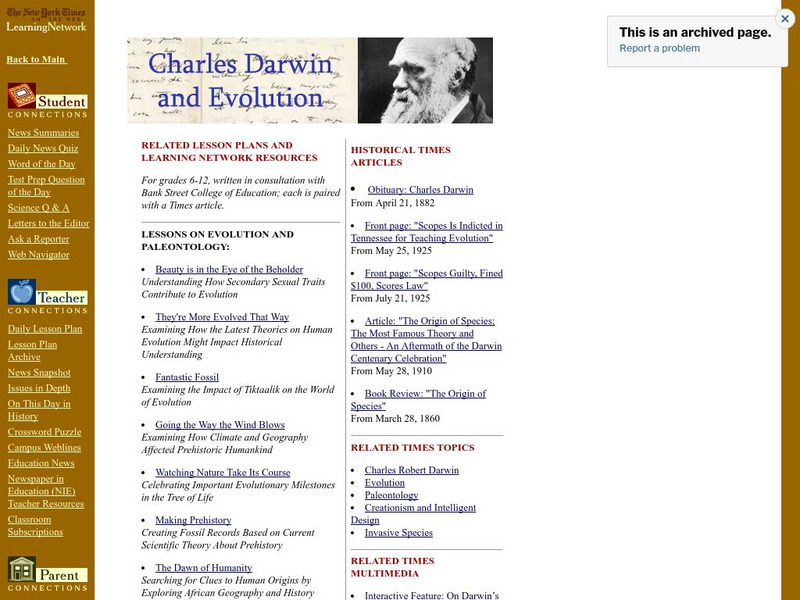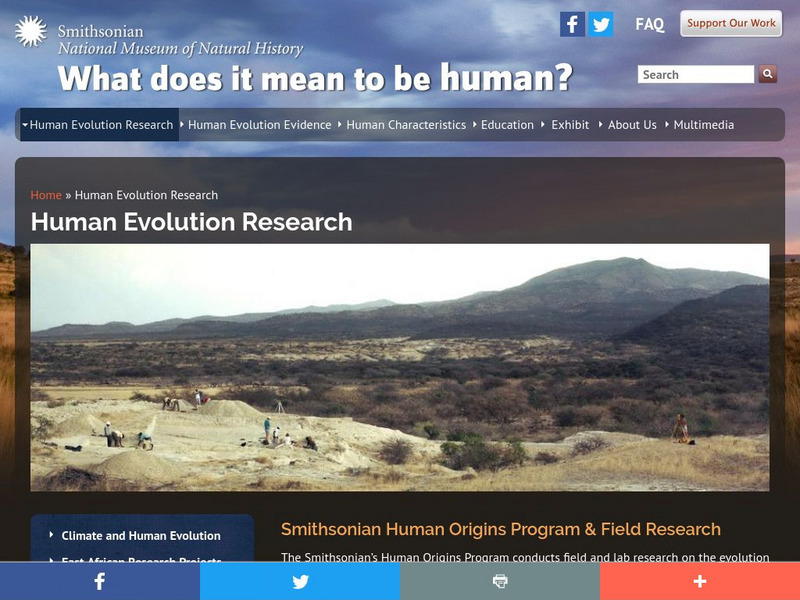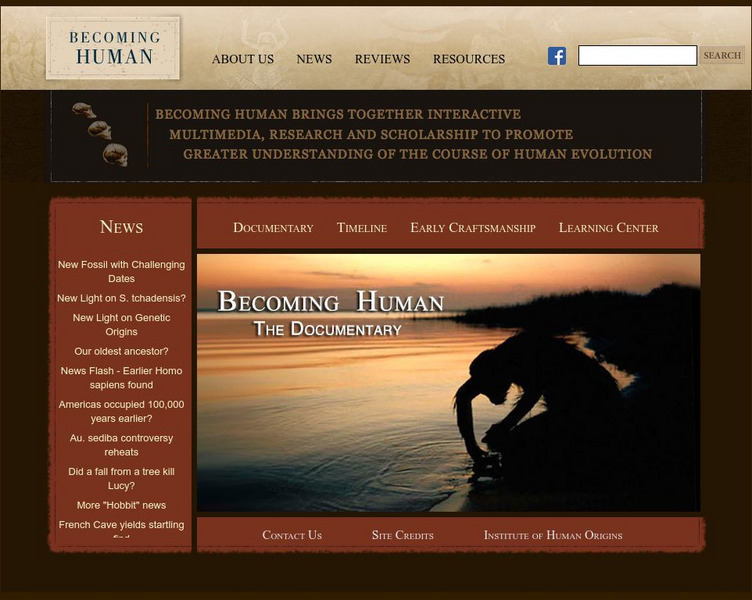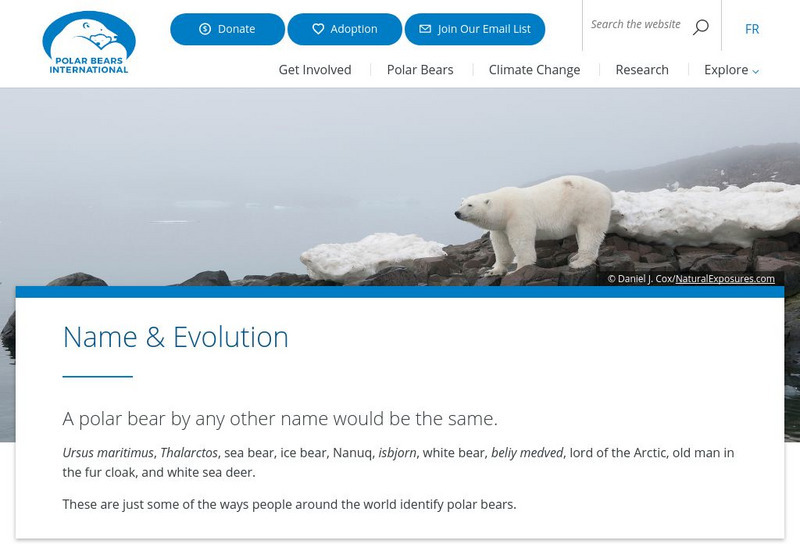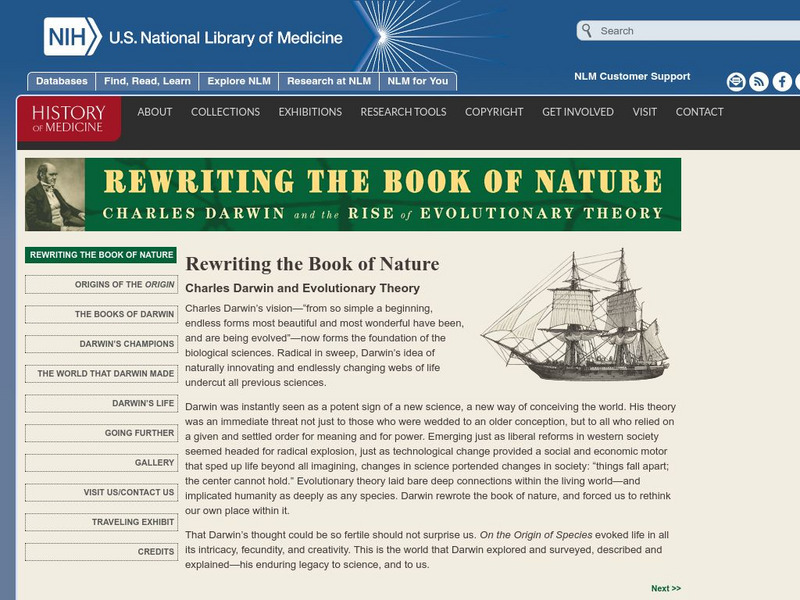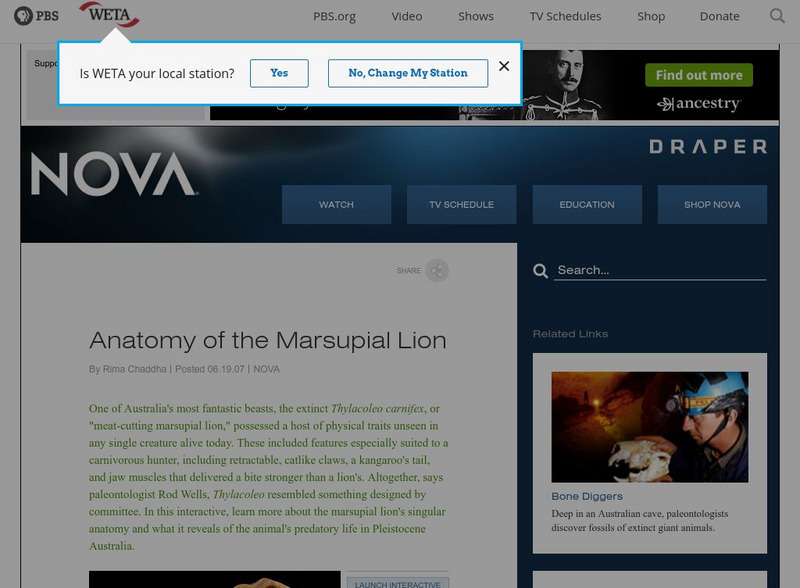American Museum of Natural History
What's This? Staying Safe
Amaze the class with the creative adaptations species employ to trick predators. An online interactive lesson introduces learners to six different species with unique adaptations. Each species highlights a different adaptation and its...
American Museum of Natural History
What's This? Sensing
There is a scallop that relies on sight so much that it actually has more than 100 eyes! There are many species that rely heavily on one sense or another. An online interactive resource has youth read about several of these animals. The...
Morning Earth
All Lives Interlive: Over Many Lifetimes: Adaptation
The tutorial explores adaptation. Topics examined are evolution, co-evolution, variation within species, and mutation. Definitions, examples, and pictures on the concept are included.
PBS
Nh Pbs: Nature Works: Structural and Behavioral Adaptations
This effective site focuses on how structural and behavioral adaptations help organisms survive and reproduce.
New York Times
New York Times: Charles Darwin and Evolution
An outstanding collection of materials for learning about Charles Darwin and Evolution. There are many different lessons on the topics of evolution, paleontology, biodiversity, and adaptation. Each lesson is paired with an actual New...
Smithsonian Institution
National Museum of Natural History: What Does It Mean to Be Human: Human Evolution Research
Research continues to discover evidence left behind by prehistoric man. Discover the climate effects on human evolution and explore how the adaptable survived. The Asian and East African Research Projects in Kenya are described. You,...
Other
Institute of Human Origins: Becoming Human
Multimedia-rich guide for anyone making their way through a study of human origin. Find information and analysis about the fossil record, comparative anatomy, theories, and the cultural adaptations of humans and their ancestors. With an...
PBS
Pbs Learning Media: Mammals Get Their Chance
In this video segment adapted from NOVA, animations of an asteroid hitting Earth are used to illustrate this widely accepted theory of dinosaur extinction and the resulting conditions that favored mammals.
PBS
Pbs Learning Media: Mimicry: The Orchid and the Bee
In this photograph from Oxford Scientific Films, a horned bee attempts to mate with an Ophrys orchid, which has evolved to resemble a female bee.
Other
Polar Bears International: The Bear Facts
This site from Polar Bears International, dedicated to the worldwide conservation of the polar bear and its arctic habitat, provides extensive information about the polar bear. Content includes polar bear I.Q., hibernation facts,...
PBS
Pbs Learning Media: American Chestnut Tree
This annotated slideshow adapted from KET's Electronic Field Trip to the Forest illustrates how blight decimated the American chestnut tree and the methods scientists use to identify and pollinate the remaining trees to create...
National Institutes of Health
National Library of Medicine: Rewriting the Book of Nature
Explore the work of Charles Darwin and the theory of evolution. This comprehensive resource includes information about Darwin's life in addition to the process of species evolution.
Other
Historia Del Idioma Espanol
An informative study, in Spanish, of the history of the Spanish language, its origins, its evolution, and its history in America. There is also an article about the Argentine adaptations of the language, and another link that covers the...
Estrella Mountain Community College
Online Biology Book: Biodiversity: Nonvascular & Nonseed Vascular Plants
Photographs, informative tables, and illustrated diagrams help explain the diversity of the plant kingdom in this college-level textbook.
PBS
Nova: Bone Diggers: Anatomy of Thylacoleo
Thylacoleo or the extinct marsupial lion had an unusual array of adaptations that enabled it to be an effective predator. Explore an interactive fossil of the lion to learn more about each of its' adaptations.

